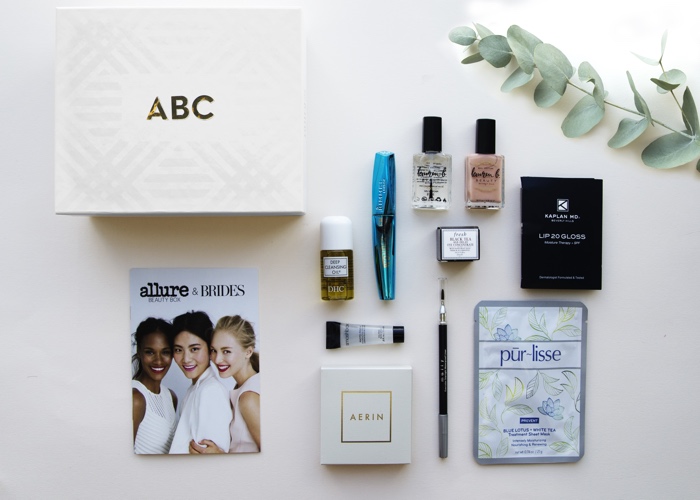Connect with execs from The New York Times, TIME, Dotdash Meredith and many more
Conde Nast sees commerce opportunities in branded subscription boxes

Condé Nast U.S. wants to use its brands as taste-makers. This June, GQ will launch a grooming box filled with products GQ and Allure editors have selected. GQ will be the fourth Condé title to get its own box in the past year, joining Brides, Condé Nast Traveler and Teen Vogue, which have all launched limited-edition boxes, either in partnership with Allure or with third parties.
“We’re trying to diversify our revenue,” said Jill Friedson, Condé Nast’s head of brand marketing and strategic partnerships.
Though their contents — and prices — can differ widely, the proposition of a branded subscription or gift box is about the same: a small assortment of items, many of them travel-sized, gets shipped to a customer’s door every month, with a dollar value that’s normally higher than the subscription’s monthly cost. Teen Vogue’s back-to-school box, for example, costs $39 but includes $145 worth of stuff, like a $19 eyebrow crayon and a $39 vibrating face-washing implement.
All of the boxes’ items are sourced and purchased up front by the publisher, which makes boxes a riskier, more expensive and more resource-intensive revenue source than affiliate links or even on-demand, drop-shipped products.
But subscription boxes also come with a major upside. A healthy subscription box operation can help publishers shore up print circulation, drive e-commerce revenue and deepen relationships with advertisers and other marketing partners. So a publisher like Condé Nast, which has a big database of women that have read or previously subscribed to other titles, sees opportunity.
“We think there’s a big base of women who are hungry for these kinds of products,” Friedson said.
The company is shy about how many subscribers it currently has, but as of early last year, it had over 30,000 of them, and, per Friedson, it’s a slim but profitable operation. Three people are in charge of sourcing the products, a full-time editor is responsible for producing a booklet inserted into each box, ten other full-time people are dedicated to marketing the boxes across several departments, and a team handles fulfillment. The company rents a warehouse as well.
Allure’s box began as a partnership with Beauty Bar, but in 2015, Condé decided to take the entire operation in-house, partly because it wanted to have stronger branding and partly because it wanted full control of its subscribers’ first-party data, Friedson said.

Bringing the operation in-house also allowed Condé Nast to target people across its portfolio of titles, a pool of potential subscribers many times larger than Allure’s base that also had the potential to grow Allure’s circulation: 20 percent of Allure’s box subscribers also sign up for print subscriptions, Friedson said.
“Our consumer marketing partners have been really impressed,” Friedson said. “They hadn’t seen growth like that. It’s a new lever for us.”
Moving things in-house also allowed the publisher to dramatically cut down on customer acquisition costs for the boxes, one of the largest expenses for any subscription-focused business.
Customer acquisition is expensive because the upside is high; most popular subscription boxes cost between $10 and $15 per month, according to Liz Cadman, the editor of My Subscription Addiction.
Those subscription fees make up the lion’s share of revenue, but they’re not the sole source. The company also sends out an email newsletter that includes affiliate links to the products featured in each box, and Allure gets a piece of each sale. That newsletter, which has an open rate of 46 percent and a click-through rate of 15 percent, has also been the biggest growth driver for the boxes.
Condé has been busy trying to build similar businesses using the infrastructure it’s put in place with Allure. Allure’s editors help colleagues from other Condé titles put their own boxes together, which is how the limited-edition boxes for other Condé brands have emerged: Condé Nast Traveler and Brides last spring, and Teen Vogue last fall.
Condé Nast Traveler has created branded boxes not just in partnership with Allure but with Try The World, a food-focused startup that ships snacks and other treats to subscribers. Teen Vogue, which started with a back-to-school box, will release another one later this year.
These smaller steps allow each publisher to make sure there is an audience for a box. GQ, for example, took a brief stab at subscriptions with a pricey offering that cost $100 per box, plus shipping. That box flamed out in 2015. “You really have to understand the market,” said Cadman.
More in Media

Three publishers’ workforce diversity reports show DEI efforts remain sluggish
Overall, staff diversity at The New York Times, Hearst and Condé Nast has either marginally improved or stalled in 2024, according to their annual workforce diversity data this year.

Retail media meets publishing: News UK, Future and Ocado tap clean room tech for smarter data targeting
News UK, The Independent, Immediate Media and Future are teaming up with retail media network Ocado to test clean room-powered data matching.

From sidelines to spotlight: Esports events are putting creators center stage
Esports events’ embrace of content creators reflects advertisers’ changing priorities across both gaming and the wider culture. In the past, marketers viewed esports as one of the best ways to reach gamers. In 2025, brands are instead prioritizing creators in their outreach to audiences across demographics and interest areas, including gaming.








